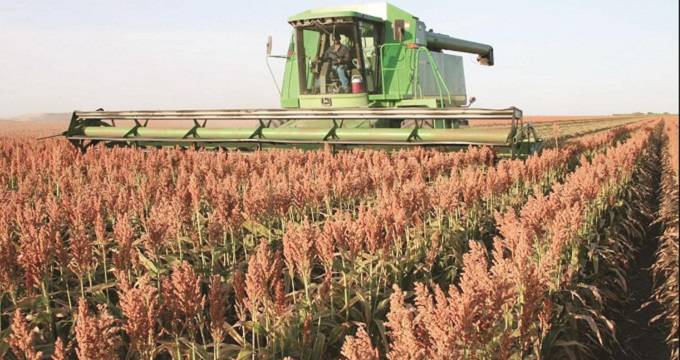Read full article by Christopher Petty@ Fort Scott Biz; PC:ICRISAT
The amount of grain left in the field for cattle to eat after harvest has been reduced considerably in recent years through modern farming improvements. However, weather conditions can result in significant ear drop or plant lodging. Before turning cattle out for grazing, scout fields to look for piles of grain on the ground and determine if there is over 8-10 bushels of grain on the ground. If so, management should be taken to remove these piles prior to turning out cattle on the residue. Be sure that cattle have had access to plenty of hay before turning them out into cornfields, to keep hungry cows from gorging in grain.
Any grain available, in the field after harvest, would have the highest protein content followed by the leaves. The cob has the lowest protein and energy value. The stalk and husks have similar crude protein content, but more energy is available from the husks than the stalks due to the lower lignin content. In general, leaves from milo sorghum residue have higher protein content than corn leaves. The stalks of corn and sorghum are similar in protein, but digestibility is somewhat higher in sorghum than corn.
To ensure adequate residue to protect soil remains on the field after grazing, we can use animal weight and grain yield to determine the amount of grazing available. Cattle will readily remove approximately 15% of the residue (leaves and husk), but can be forced to remove more if desired. The goal should be to leave at least ½ of the total amount of residue on the field.
If corn yield is 180 bu/acre, a rule of thumb is to divide by 3.5 to get grazing days for a 1200-pound cow. In this case, 180 bu/acre corn residue should provide approximately 51 days of grazing (180/3.5 = 51) for a 1200 lb cow. The harvest index is similar for both corn and grain sorghum, so an 85 bus/acre dryland sorghum divided by 3.5, would provide approximately 24 days of grazing (85/3.5 = 24). A lactating cow or a heavier cow will consume more dry matter and the days of grazing would be adjusted downward. And of course, a smaller animal could graze longer.

